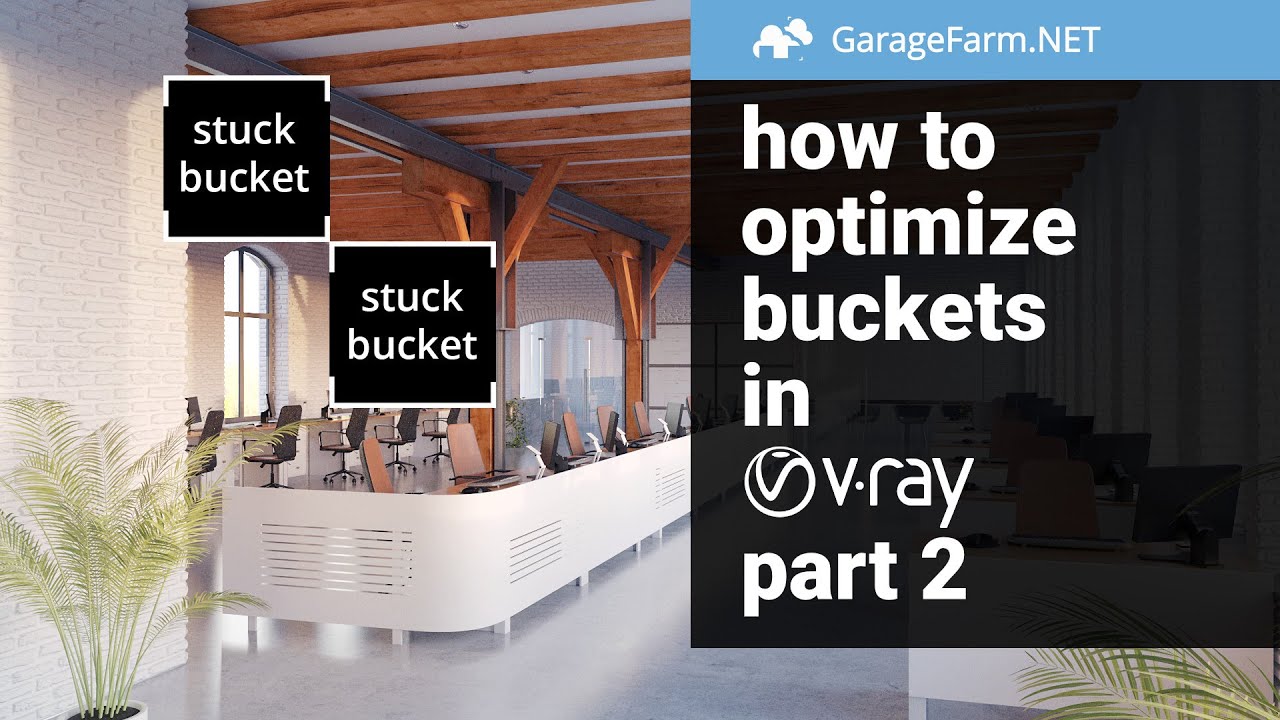Hey guys.
Andrew here from GarageFarm.NET’s Academy.
Some time ago I recorded a tutorial about optimizing buckets settings and dealing with ‘frozen bucket’ issue. It is quite a common issue and I’ve seen it many many times working as a cloud render farm support team member.
The tutorials are based on the V-Ray documentation, my tests and everything I could find on forums. I wish I had the knowledge of V-Ray developers but I did what I could to gather all the info that’s out there. I work in 3ds Max but V-Ray options are similar in all DCCs so I think you can apply it to Blender as well.
How to optimize buckets in V-Ray part 1 - Option analysis
In this tutorial, you will learn how to optimize bucket settings in V-Ray. The tutorial tackles the basics of technical reasons behind the performance of various bucket settings and gives tips on how to set your scene for cloud rendering - so you can save your time and money.
We tested various types of scenes with different bucket settings like sizes, and ratios to check which ones are most RAM and rendering speed efficient. We also checked rendering sequences for their performance and perks.
How to optimize buckets in V-Ray part 2 - Troubleshooting hanging buckets
In this tutorial, we talk about the issue of ‘hanging buckets’ which sometimes happen in V-Ray and other engines using bucket image sampler.
This problem can cause long render times which can cost you missed deadlines or high cost of rendering on cloud farms.
You will see what are typical reasons for such a situation and how to easily troubleshoot and optimize scenes with problems of stubborn buckets rendering too long.
I hope you will find them useful.

